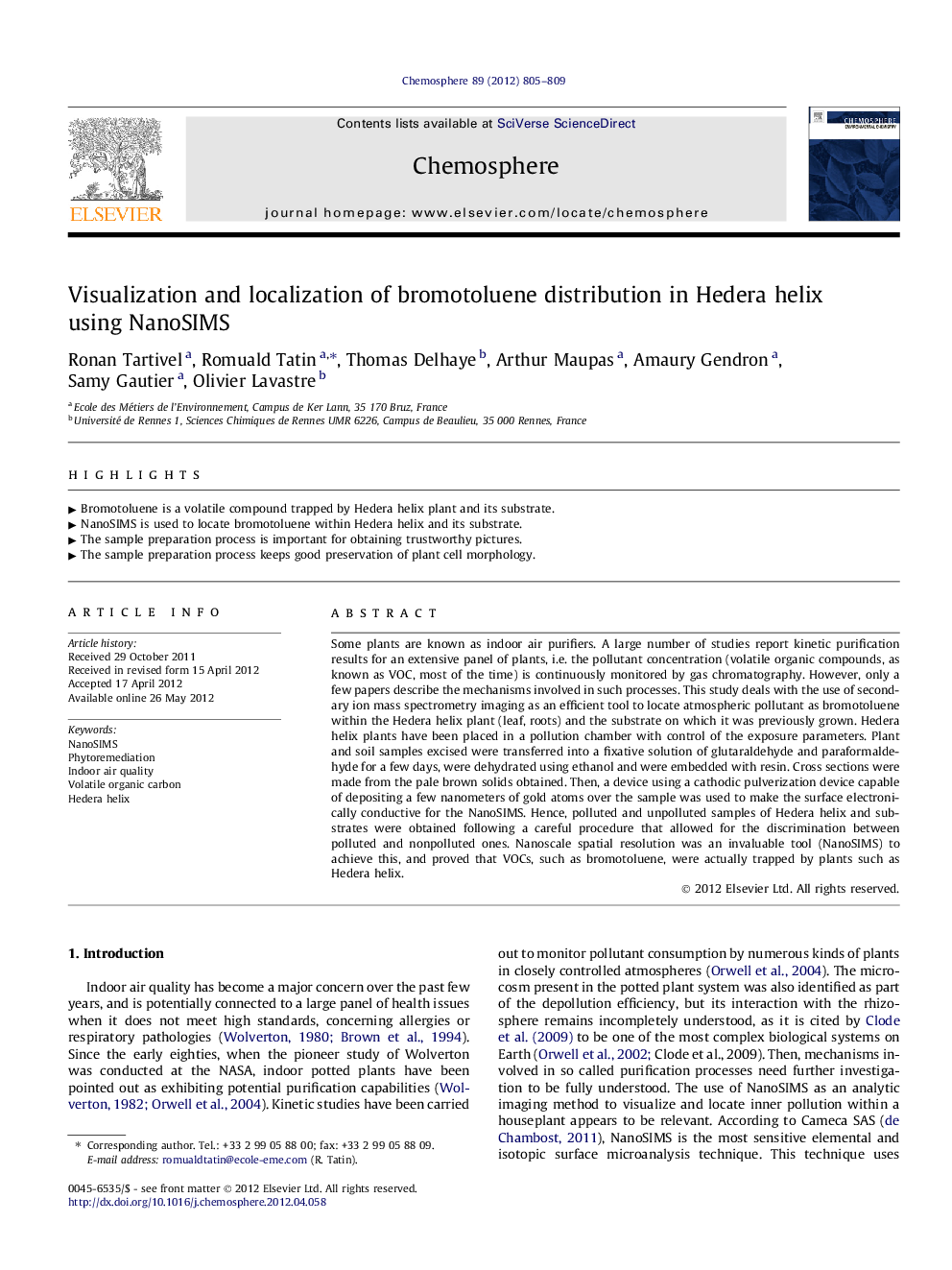| Article ID | Journal | Published Year | Pages | File Type |
|---|---|---|---|---|
| 4409949 | Chemosphere | 2012 | 5 Pages |
Some plants are known as indoor air purifiers. A large number of studies report kinetic purification results for an extensive panel of plants, i.e. the pollutant concentration (volatile organic compounds, as known as VOC, most of the time) is continuously monitored by gas chromatography. However, only a few papers describe the mechanisms involved in such processes. This study deals with the use of secondary ion mass spectrometry imaging as an efficient tool to locate atmospheric pollutant as bromotoluene within the Hedera helix plant (leaf, roots) and the substrate on which it was previously grown. Hedera helix plants have been placed in a pollution chamber with control of the exposure parameters. Plant and soil samples excised were transferred into a fixative solution of glutaraldehyde and paraformaldehyde for a few days, were dehydrated using ethanol and were embedded with resin. Cross sections were made from the pale brown solids obtained. Then, a device using a cathodic pulverization device capable of depositing a few nanometers of gold atoms over the sample was used to make the surface electronically conductive for the NanoSIMS. Hence, polluted and unpolluted samples of Hedera helix and substrates were obtained following a careful procedure that allowed for the discrimination between polluted and nonpolluted ones. Nanoscale spatial resolution was an invaluable tool (NanoSIMS) to achieve this, and proved that VOCs, such as bromotoluene, were actually trapped by plants such as Hedera helix.
► Bromotoluene is a volatile compound trapped by Hedera helix plant and its substrate. ► NanoSIMS is used to locate bromotoluene within Hedera helix and its substrate. ► The sample preparation process is important for obtaining trustworthy pictures. ► The sample preparation process keeps good preservation of plant cell morphology.
